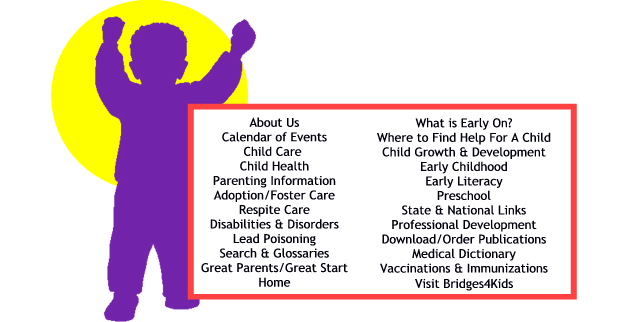|
Chris P.
Johnson, M.D., M.Ed., FAAP
A primary care physician caring for approximately 1,000 children in a
general practice should expect that approximately three to seven of
his/her patients will demonstrate signs of autism spectrum disorder (ASD).
ASD appears to be more common than once thought. The reason for this is
not yet clear but probably relates to a number of factors, including
broader criteria, increasing professional and public awareness of the
symptom spectrum, better ascertainment and perhaps a true rise in
prevalence. Sufficient evidence now suggests that vaccines and thimerosal
are not likely responsible for the apparent rise in prevalence.
Why is early diagnosis important?
A number of consensus publications, supported by research, have documented
the positive benefit of early intervention, particularly when it is
initiated prior to 3 years of age. The goal of these documents was to
raise awareness of the very early signs of ASD so children might be
diagnosed and referred to intervention earlier.
Currently, the average age of diagnosis is approximately 3 years. However,
the signs of ASD are present in most children prior to 18 months of age.
Some children with ASD appear to be "normal" until 12 to 24 months of age
and then regress. However, retrospective assessments of home videos at the
childís first birthday often reveal subtle abnormalities, especially
failure to orient to oneís name. A multicenter study is in progress ("Baby
Sibs Project") that is attempting to identify very early signs of ASD
(those appearing between the ages of 3 and 6 months) in infants who are
younger siblings of children already diagnosed with ASD.
How does one make an early diagnosis?
Parents are now more aware of ASD symptoms due to extensive coverage of
ASD in the media. Thus, they are more likely to raise concerns about the
possibility of ASD. The first thing the primary physician can do is to
listen to the parents and take their concerns seriously.
The most common parental concern is "delayed speech." However, speech
delays usually are not recognized until after the second birthday. An
earlier, but less commonly expressed concern, is that of a hearing
impairment. The apparent hearing deficit is atypical in that symptoms are
inconsistent, i.e., although the child does not respond to his/her name
being called or to verbal commands, he/she seems to hear environmental
sounds well.
Finally, parents may state that the child does not seem to notice when
they enter or leave the room, there is little or no eye contact or the
child seems to be in his/her own world.
Impairment in joint attention skills are among the earliest signs of ASD
and are now known to be unique to and almost universal in children with
ASD. However, due to lack of familiarity, parents are less likely to have
concerns regarding deficits in this continuum of social-communicative
development. Joint attention behaviors involve the triadic coordination or
sharing of attention among the infant, another person and an object or
event. Joint attention skills typically emerge between 6 and 14 months and
include following a caregiverís gaze, following a point, showing and
pointing. Joint attention impairments do not cause autism; rather they are
manifestations of abnormalities of early brain development, most likely in
the amygdala.
Most ASD screening tools assess joint attention skills. The
primary pediatrician is encouraged to become familiar with at
least one screening tool and administer it to all children at
18 months of age, especially those with suspected language and/or
social skills deficits. (For a discussion of tools, see the
AAP technical report:
Pediatrics. 2001;107:e85[Abstract/Free
Full Text], or the American
Academy of Neurology (AAN) practice parameters:
Filipek PA, et al. Neurology. 2000;55:468-4
[Abstract/Free Full Text];
Filipek PA, et al. J Autism Dev Disord.
1999; 29:439-484[Medline]).
Most of these tools are short questionnaires that parents can complete in
a waiting room. Additionally, all younger siblings of children with ASD
should be monitored vigilantly as these children are at much higher risk
(5% to 7%) for developing ASD.
When there is parent and/or physician concern based on history,
observation and/or a positive screening questionnaire, the physician
should immediately refer the family to a specialist, or preferably, a team
of specialists experienced in the diagnosis of ASD. At the same time, the
child should be referred to the local intervention program. A definitive
diagnosis of autism is not necessary to meet eligibility criteria for
these services.
A review of the literature revealed that effective programs address
communication and social skills, incorporate behavior management
strategies that are based on a functional analysis of behavior, maintain a
high level of parent involvement, and are structured, generalizable and
intense (15 to 20 hours per week).
Unfortunately, intense programs usually are not available for children
younger than 3 years of age. Nevertheless, all programs should incorporate
curricula that promote joint attention skill development ( Walen J. Child
Psychol Psychiatry. 2003;44:456). Joint attention skills play a "pivotal"
role in later communication and social development, i.e., they are the
skills upon which progress depends.
In an effort to facilitate the implementation of the AAP policy statement
and AAN practice parameters recommendations regarding early diagnosis, the
Academy assembled an Autism Expert Panel to evaluate strategies and to
develop helpful tools. The first tool is included as an insert in this
issue of AAP News. See A.L.A.R.M.: Autism is prevalent; Listen to the
parents; Act early; Refer; Monitor. Others tools are under consideration
or in development.
Dr. Johnson is a member of the AAP Committee on Children with
Disabilities and co-chair of the AAP Autism Expert Panel.
Parent Sharing: "An Autism A.L.A.R.M Information sheet can be
downloaded from the First Signs Website at
www.firstsigns.org. This very
informative document can be distributed to physicians and others to
identify the early signs of autism."
|
